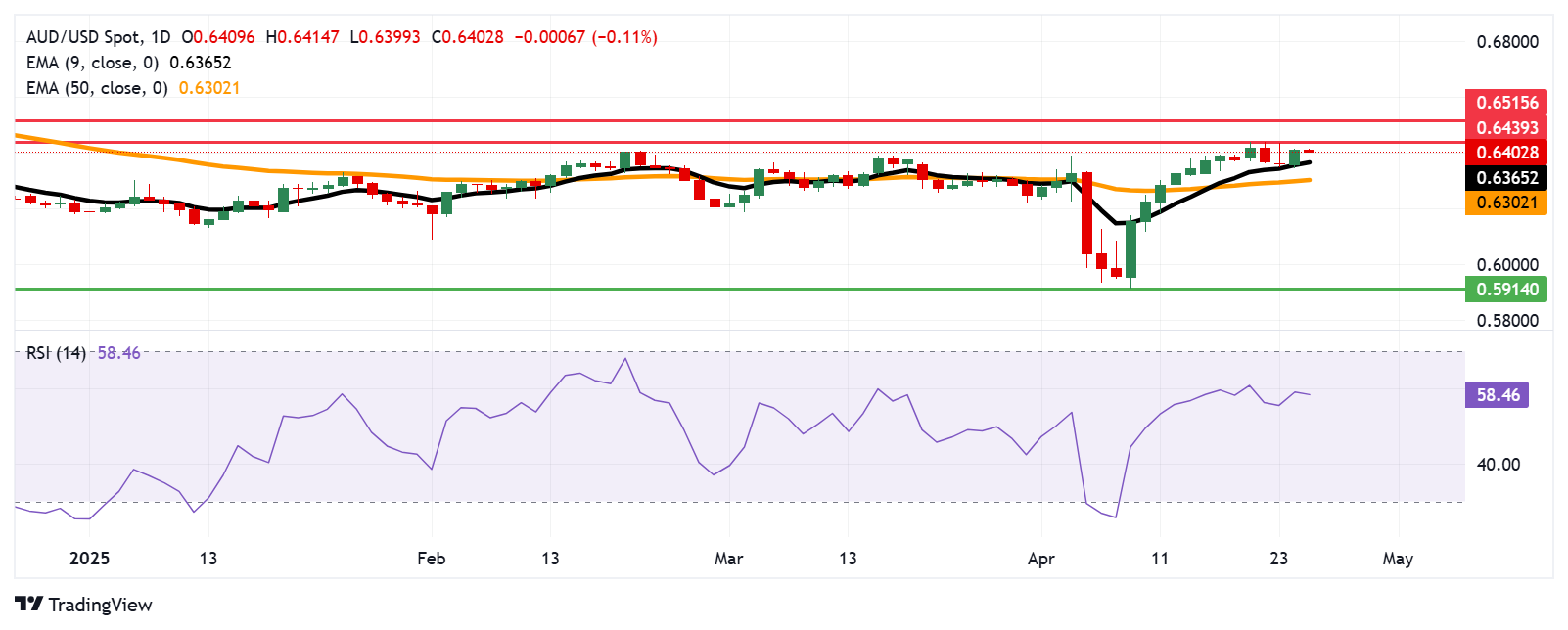
The Australian Dollar remains under pressure amid ongoing US-China trade tensions, given Australia's strong economic ties with China.
Market sentiment was mixed after reports suggested the Trump administration could consider reducing tariffs on Chinese imports.
China’s Finance Ministry noted that global economic growth continues to face headwinds, with trade and tariff disputes.
The Australian Dollar (AUD) edges lower against the US Dollar (USD) on Friday, retreating after gains in the previous session. The drop in the AUD/USD pair is driven by persistent US-China trade tensions, as Australia's close trade relationship with China makes it particularly sensitive to developments between the two economic giants.
Traders continued to track the fluid global trade landscape. Market sentiment remained mixed following reports that the Trump administration might reduce tariffs on Chinese imports, depending on the progress of potential talks with Beijing. China expressed a willingness to engage in discussions, provided the US stops issuing new threats. However, US Treasury Secretary Scott Bessent downplayed the optimism, clarifying that no unilateral tariff cuts had been proposed and that formal negotiations have not yet commenced.
China's Finance Ministry stated on Friday that global economic growth remains sluggish, with tariff and trade wars continuing to undermine economic and financial stability. The ministry urged all parties to enhance the international economic and financial system through stronger multilateral cooperation, per Reuters.
On Thursday, Westpac forecasted that the Reserve Bank of Australia (RBA) would lower interest rates by 25 basis points at its upcoming May 20 meeting. The RBA has adopted a data-driven approach in recent quarters, making it difficult to predict its actions beyond the next meeting with confidence.
Australian Dollar struggles as US Dollar appreciates due to potential US trade agreements
The US Dollar Index (DXY), which measures the USD against six major currencies, retraces its recent losses from the previous session, trading near 99.60 at the time of writing. However, the Greenback faced headwinds following the release of the Initial Jobless Claims data on Thursday.
The US Department of Labor (DOL) reported on Thursday that initial applications for unemployment benefits rose for the week ending April 19. Initial Jobless Claims increased to 222,000, slightly above expectations and up from the previous week’s revised figure of 216,000. Meanwhile, Continuing Jobless Claims declined by 37,000, falling to 1.841 million for the week ending April 12.
The flash S&P Global Composite PMI for April dropped to 51.2 from 53.5, indicating a slowdown in overall business activity. Although the Manufacturing PMI inched up to 50.7, the Services PMI declined sharply to 51.4 from 54.4, pointing to softening demand in the services sector.
S&P Global’s Chris Williamson commented that growth momentum is losing steam, while persistent inflationary pressures continue to complicate the Federal Reserve’s efforts to strike a balance.
According to the Fed’s April Beige Book, concerns over tariffs have worsened the economic outlook across several regions in the United States (US). Consumer spending presented a mixed picture, while the labor market showed signs of softening, with many districts reporting flat or slightly declining employment levels.
US Treasury Secretary Scott Bessent acknowledged on Wednesday that current tariffs—145% on Chinese goods and 125% on US goods—are unsustainable and must be lowered for meaningful dialogue to begin.
National Economic Council Director Kevin Hassett, President Trump's chief economic adviser, stated that the US Trade Representative (USTR) has 14 meetings scheduled with foreign trade ministers. Hassett also noted that 18 written proposals have been received from these ministers. According to Hassett, China remains open to negotiations.
Market sentiment was boosted by US President Donald Trump, who reassured investors that he has no intention of removing Federal Reserve (Fed) Chair Jerome Powell, helping ease concerns about central bank independence and policy direction.
The White House announced on Tuesday that the Trump administration is making headway in negotiating trade deals aimed at easing the broad tariffs introduced earlier this month. According to US Press Secretary Karoline Leavitt, 18 countries have already submitted trade proposals to the US, and President Trump’s trade team is scheduled to meet with representatives from 34 nations this week to explore potential agreements.
The Judo Bank Manufacturing PMI edged down to a two-month low of 51.7 in April, compared to 52.1 in March. While manufacturing output remained in expansion territory, the increase in new orders was modest. Meanwhile, the Services PMI dipped slightly to 51.4 from 51.6 in the previous month, and the Composite PMI also eased to 51.4 from 51.6.
Australian Dollar finds resistance near four-month highs, 0.6450 level
The AUD/USD pair is hovering around 0.6410 on Friday, with daily chart technicals maintaining a bullish bias. The pair remains above the nine-day Exponential Moving Average (EMA), while the 14-day Relative Strength Index (RSI) holds steady above the 50 mark, indicating continued upward momentum.
To the upside, immediate resistance is located at the recent four-month high of 0.6439, set on April 22. A clear break above this level could open the door for a rally toward the five-month high of 0.6515.
The initial support lies at the nine-day EMA, currently at 0.6365, with stronger support near the 50-day EMA at 0.6302. A sustained move below these levels would weaken the bullish outlook and may trigger deeper losses, potentially exposing the March 2025 low near 0.5914.
AUD/USD: Daily Chart

Australian Dollar PRICE Today
The table below shows the percentage change of Australian Dollar (AUD) against listed major currencies today. Australian Dollar was the weakest against the US Dollar.

The heat map shows percentage changes of major currencies against each other. The base currency is picked from the left column, while the quote currency is picked from the top row. For example, if you pick the Australian Dollar from the left column and move along the horizontal line to the US Dollar, the percentage change displayed in the box will represent AUD (base)/USD (quote).
* The content presented above, whether from a third party or not, is considered as general advice only. This article should not be construed as containing investment advice, investment recommendations, an offer of or solicitation for any transactions in financial instruments.


